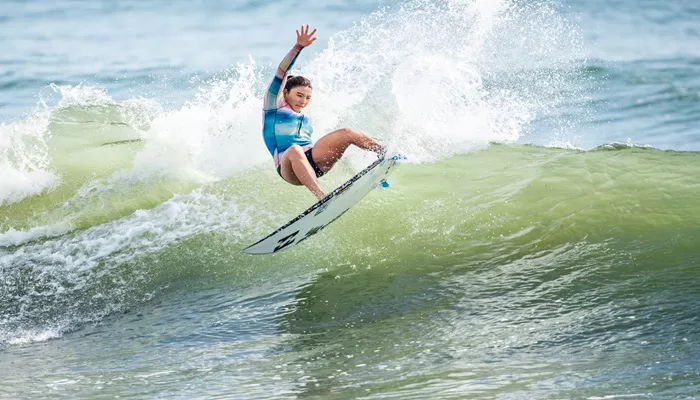Water surfing stands as one of the most exhilarating extreme sports in the world. From the serene coastlines of Hawaii to the pounding barrels of Tahiti, surfing offers not just physical thrill but a deep connection with the ocean. It blends balance, agility, timing, and an understanding of nature’s rhythm. Whether you’re a beginner or just curious, this guide explores everything you need to know about water surfing—from history and gear to styles, safety, and beyond.
The Origin of Water Surfing
Surfing traces back over a thousand years. Polynesian cultures pioneered it, especially in Hawaii. Surfboards were crafted from wood, with surfing often reserved for royalty. In the 20th century, surfing evolved globally. California and Australia became hotspots. Surfboards shifted from heavy wood to lightweight fiberglass. Today, surfing is a global sport, even part of the Olympic Games.
What Is Water Surfing?
Water surfing is the sport of riding on ocean waves using a board. Surfers paddle out, wait for a wave, then stand on the board to ride toward the shore. Balance, wave reading, and timing are essential. Surfers use various styles, from cruising on longboards to aggressive maneuvers on shortboards.
Types of Surfing
Surfing comes in many forms. Each type offers unique thrills:
Shortboard Surfing: High-performance. Allows sharp turns, aerial tricks.
Longboard Surfing: Classic. Smooth rides. Great for beginners.
Tow-in Surfing: Used in big waves. Requires jet ski assistance.
Bodyboarding: Riding waves while lying on a small board.
Stand-Up Paddleboarding (SUP): Paddling while standing on a large board.
Foil Surfing: Surfing with a hydrofoil beneath the board. Allows flying above water.
River Surfing: Performed on river waves. Popular in landlocked areas.
Essential Surfing Equipment
Gear is vital. Each component supports balance, safety, and performance:
Surfboard
Main tool. Comes in various lengths and shapes. Tail design, rocker, and fins affect performance.
Leash
Attaches surfboard to ankle. Prevents board from drifting. Increases safety.
Wetsuit
Insulates body in cold water. Varies in thickness. Allows flexibility and warmth.
Wax or Traction Pads
Improves grip. Applied to top of the board. Prevents slipping.
Fins
Attached under the board. Affects direction, stability, and speed.
How to Start Surfing
Getting started involves learning basic skills, safety, and surf etiquette:
Choose the Right Board
Beginners benefit from longboards. Easier to balance. Offers more stability.
Understand Wave Dynamics
Learn how waves break. Identify safe zones and rip currents.
Practice Paddling and Popping Up
Paddle efficiently. Pop up quickly from lying to standing position.
Take Surf Lessons
Professional guidance accelerates progress. Teaches foundational techniques and safety.
Start in Small, Gentle Waves
Build confidence. Avoid dangerous conditions early on.
Techniques And Skills
Mastery takes time. Fundamental skills include:
Paddling
Move efficiently. Use alternating arm strokes. Position correctly on board.
Duck Diving and Turtle Rolling
Helps pass waves while paddling out. Shortboards duck dive. Longboards turtle roll.
Pop-Up
Swift transition from prone to standing. Requires timing and balance.
Bottom Turn
Key maneuver. Performed at wave base. Sets up next move.
Cutback and Carving
Used to return to wave power zone. Maintains momentum.
Tube Riding
Advanced skill. Riding inside a barreling wave. Requires precision and speed.
Common Surfing Mistakes
New surfers often:
- Choose unsuitable boards
- Ignore wave etiquette
- Stand too stiff or too late
- Fail to observe surf conditions
Wave And Weather Conditions
Understanding nature is crucial:
Swell
Generated by distant storms. Swell height and interval determine wave size and quality.
Wind
Offshore winds groom waves. Onshore winds create choppy conditions.
Tides
Affect wave shape. Some spots work best at high tide, others at low.
Forecast Tools
Use apps and sites like Surfline or Magicseaweed. Track swell, wind, tide data.
Surf Etiquette And Safety
Respect and awareness are non-negotiable:
Right of Way
Closest surfer to wave peak has priority. Avoid dropping in.
Don’t Snake
No cutting in front of someone already waiting.
Hold Onto Your Board
Loose boards cause injuries. Control it, especially in wipeouts.
Stay Calm in Wipeouts
Wipeouts are normal. Don’t panic. Protect head, resurface slowly.
Know Your Limits
Avoid conditions beyond skill level. Never surf alone in unfamiliar spots.
Health And Fitness for Surfing
Strong core, shoulders, and balance aid performance:
Cardio
Boost paddling endurance. Swimming and running help.
Strength Training
Focus on back, shoulders, legs. Enhances pop-up and turns.
Flexibility
Prevents injuries. Improve agility on the board.
Yoga
Improves balance, flexibility, and breathing control.
Famous Surfing Locations
Top spots draw surfers worldwide:
Pipeline, Hawaii: Legendary barrels. For experts only.
Snapper Rocks, Australia: Long, fast rights. Crowd favorite.
Jeffreys Bay, South Africa: Endless point breaks.
Trestles, California: Consistent waves. Training ground for pros.
Teahupo’o, Tahiti: Powerful, thick reef breaks. Extreme challenge.
Environmental Considerations
Surfers are ocean stewards. Pollution and reef damage threaten spots:
Use Eco-Friendly Wax and Gear
Reduces chemical runoff. Choose sustainable brands.
Support Cleanups
Participate in beach cleanups. Keep breaklines safe and beautiful.
Respect Marine Life
Don’t disturb reefs, turtles, or fish. Avoid stepping on coral.
Competitive Surfing
Surfing has grown into a global sport:
WSL (World Surf League)
Top-tier surf competition. Features elite male and female surfers.
Olympic Surfing
Debuted in Tokyo 2020. Adds prestige and exposure.
Big Wave Contests
Events like Mavericks, Nazaré. Require tow-ins and courage.
Technological Advances
Innovation shapes modern surfing:
Wave Pools
Provide perfect, replicable waves. Improve access inland.
Surf Forecasting Apps
Enhance session planning. Help surfers chase swells efficiently.
Board Design
Refinements in shape and material. Boards now suit all levels and wave types.
Surf Culture And Lifestyle
Surfing is more than sport. It’s identity, fashion, and art:
Surf Films and Documentaries
Classics like “The Endless Summer” inspire generations.
Surf Fashion
Brands like Quiksilver, Roxy, Billabong reflect coastal style.
Community
Local surf scenes foster tight-knit bonds, shared stoke.
Conclusion
Water surfing remains one of the most captivating, dynamic extreme sports. It demands physical skill, respect for nature, and mental focus. From mellow rides to monstrous barrels, it’s a pursuit filled with joy, challenge, and beauty. For those drawn to the rhythm of the ocean, surfing offers not just adrenaline—but a lifelong journey.

